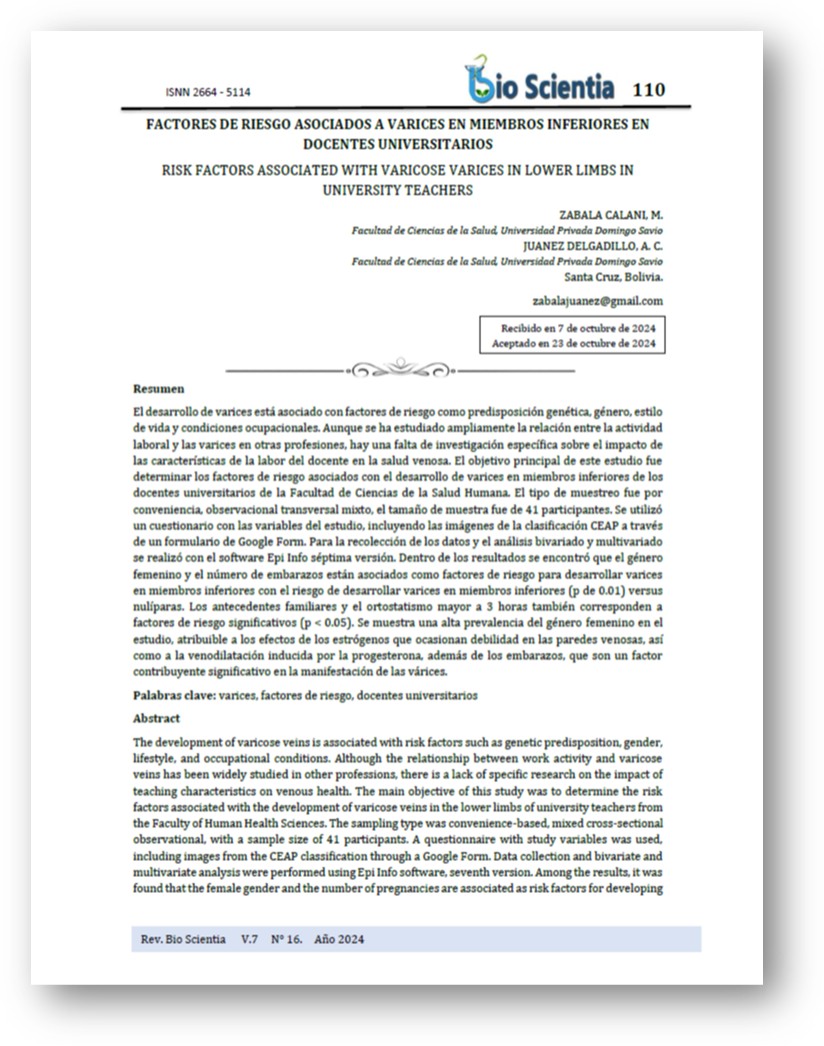RISK FACTORS ASSOCIATED WITH VARICOSE VARICES IN LOWER LIMBS IN UNIVERSITY TEACHERS
Keywords:
varicose veins, risk factors, university professorsAbstract
The development of varicose veins is associated with risk factors such as genetic predisposition, gender, lifestyle, and occupational conditions. Although the relationship between work activity and varicose veins has been widely studied in other professions, there is a lack of specific research on the impact of teaching characteristics on venous health. The main objective of this study was to determine the risk factors associated with the development of varicose veins in the lower limbs of university teachers from the Faculty of Human Health Sciences. The sampling type was convenience-based, mixed cross-sectional observational, with a sample size of 41 participants. A questionnaire with study variables was used, including images from the CEAP classification through a Google Form. Data collection and bivariate and multivariate analysis were performed using Epi Info software, seventh version. Among the results, it was found that the female gender and the number of pregnancies are associated as risk factors for developing varicose veins in the lower limbs (p = 0.01) compared to nulliparous women. Family history and standing for more than 3 hours were also significant risk factors (p < 0.05). The study shows a high prevalence of the female gender, attributable to the effects of estrogen causing weakness in venous walls, as well as progesterone-induced venodilation, in addition to pregnancies, which are a significant contributing factor in the manifestation of varicose veins.



